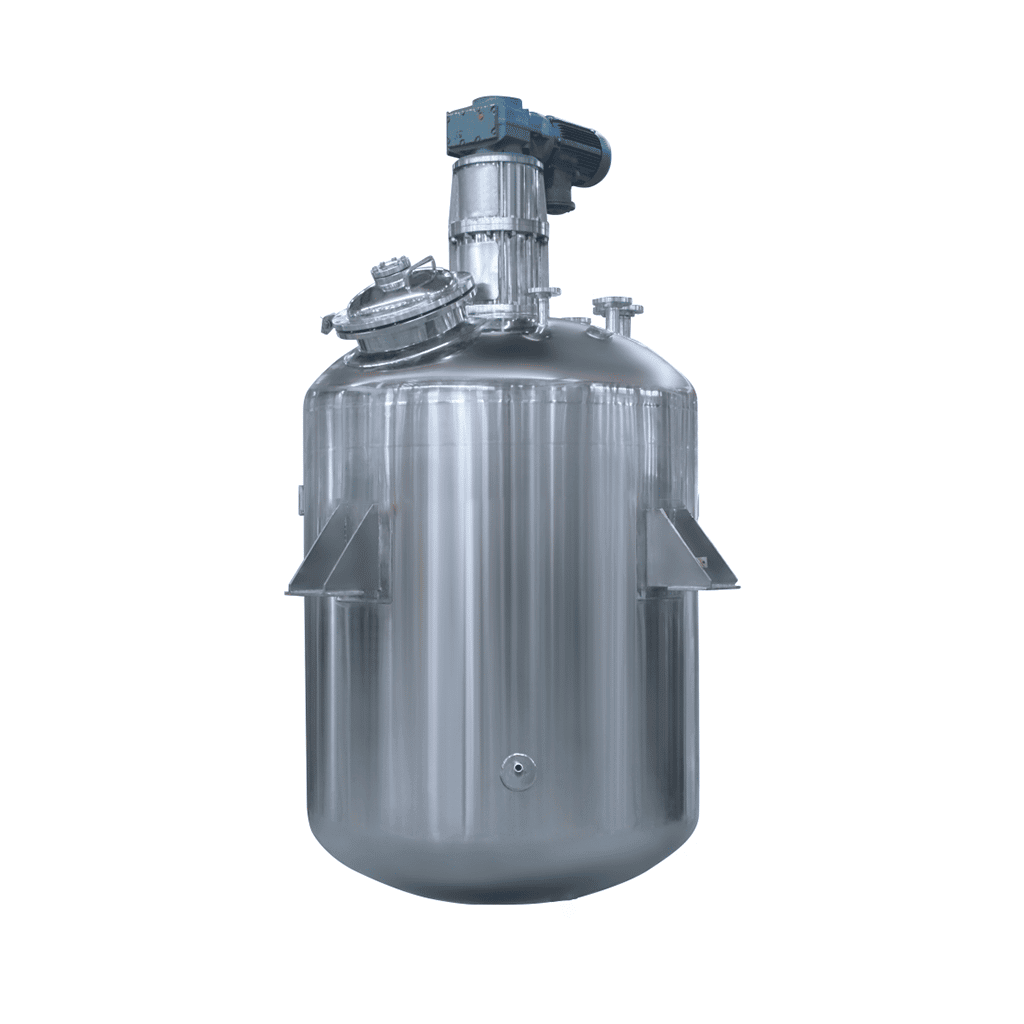
-24-1.jpg)
Stainless Steel Reactor
Stainless Steel Reactor: used in dairy products, sugar, beverages, and other fields
Material
stainless steel (316, 304)
Capacity (L)
10-10000+
Mixing system
anchor, paddle, frame and others
Heating system
electric heating, oil heating and others
A stainless steel reactor is a stainless steel container equipment. The stainless steel reactor consists of a kettle body, a kettle lid, a stirrer, a jacket, a bracket, a transmission device, a shaft seal device, etc. Materials and openings can be made according to user needs and process requirements. Stainless steel reactors are mainly used for stirring, homogenizing, and mixing storage of dairy products, sugar, beverages, food, and various pharmaceuticals.
Request a quoteChemical reactors are always in a certain unstable state during production and operation, which is determined by the production characteristics of fine chemicals. When the unstable state reaches the critical point, if it is not handled properly or not in time, the chemical reactor may explode. There are many reasons for the explosion of a chemical reactor, and it is usually the result of the superposition of multiple reasons. According to the direct cause, it can be roughly divided into the following six types: out-of-control reaction, static electricity, material cross-linking or wrong material addition, material decomposition explosion, equipment defect, and impurity-causing explosion.

Analysis of causes of chemical reactor explosion and preventive measures
1.The reaction is out of control
Cause Analysis: Nitrification, oxidation, chlorination, polymerization, etc. are all strong exothermic reactions. If the feeding rate is too fast or a sudden power failure or water cutoff occurs, the reaction heat will easily accumulate, and the temperature and pressure in the chemical reactor kettle will rise sharply, resulting in an explosion.
Preventive measures: follow the operating procedures, and control the reaction speed by controlling the temperature and feeding speed in the chemical reactor; strengthen the inspection of engineering and technical measures, such as whether the alarm, interlock, and SIS system are in good condition; ensure that the public and auxiliary projects ( Water, electricity, gas, steam) run stably; improve the control measures according to the process risk level.
2.Static electricity
Cause analysis: In the process of fine chemical production, materials in various phases (gas, liquid, solid) are always added, stirred, heated, cooled, sampled, neutralized, refined (distilled), vacuumed, vacuum broken, and materials Transfer, filtration, drying, packaging, and other operating procedures, when materials move relative to each other in the chemical reactor, static electricity is generated, which may cause the most accidents.
Preventive measures: It is strictly forbidden to use vacuum or air pressure to convey materials, and it is strictly forbidden to use pumps and metal (or static conductive measures) pipelines to transport flammable liquids; use nitrogen to break the vacuum; set nitrogen seals for chemical reactors with flammable liquids.
3.Materials are cross-linked or wrong materials are added
Cause analysis: The AO-heat transfer oil heat exchanger at the bottom of the chlorobenzene recovery tower leaked internally, and the high-temperature heat transfer oil in the tube side leaked into the shell side to mix with the chlorobenzene residual liquid, and entered the chlorobenzene recovery tower, causing the temperature in the tower to rise and the residual The sharp rise in liquefied gasification pressure caused the explosion and combustion of the chlorobenzene recovery tower.
Preventive measures: Regularly inspect the chemical reactor; analyze the possible impact of material cross-linking on the system, and implement reasonable measures; strengthen the management of hazardous chemicals in and out of storage, marking, and labeling, and strengthen operational skills training for employees.
4.Material decomposition explosion
Cause Analysis: A common operation in fine chemical enterprises is that after the reaction is completed, the chemical reactor still is used as a distillation, and its solvent is distilled and recovered. If the product is decomposed by heat and the operating temperature is not effectively controlled, the material may decompose and explode.
Preventive measures: collect and use the thermal stability data of materials; formulate emergency measures for abnormal working conditions; improve control measures based on material characteristics.
5.Equipment defects
Cause Analysis: The integrity of the chemical reactor equipment is the material basis for the safe production of the enterprise.
Preventive measures: Do a good job in the management of the entire production cycle of equipment, especially the inspection of high-temperature and high-pressure equipment; predict the use of equipment through changes in process parameters; formulate emergency measures for abnormal working conditions.
6.Impurities cause explosion
Cause Analysis: Impurities are relative to the target product or main component, which is explosive in itself (such as polynitro compounds), and may explode after accumulation (concentration) to a certain concentration. The presence of impurities will also accelerate the decomposition of other materials. For example, in the production process of anthraquinone hydrogen peroxide, the hydrogenation reaction of the working fluid is carried out under alkaline conditions, while the oxidation reaction of the hydrogenation solution and the extraction of hydrogen peroxide must be under acidic conditions. conduct. If the oxidizing solution is alkaline, the hydrogen peroxide will decompose and cause an accident.
Preventive measures: collect information on hazardous properties of chemicals, determine use and storage conditions according to their properties; strengthen monitoring of process parameters; formulate emergency response measures for abnormal working conditions.
Since the chemical reactor is usually poisonous and dangerous chemicals, the consequences of the accident are more serious than the general explosion accident. Therefore, by carrying out the safety risk assessment of fine chemical reactors, we can understand the reaction heat release of chemical reactors during the reaction process and determine the risk of the reaction process, to improve the design of safety facilities, improve risk control measures, improve the intrinsic safety level of enterprises, and effectively prevent accidents occur.




